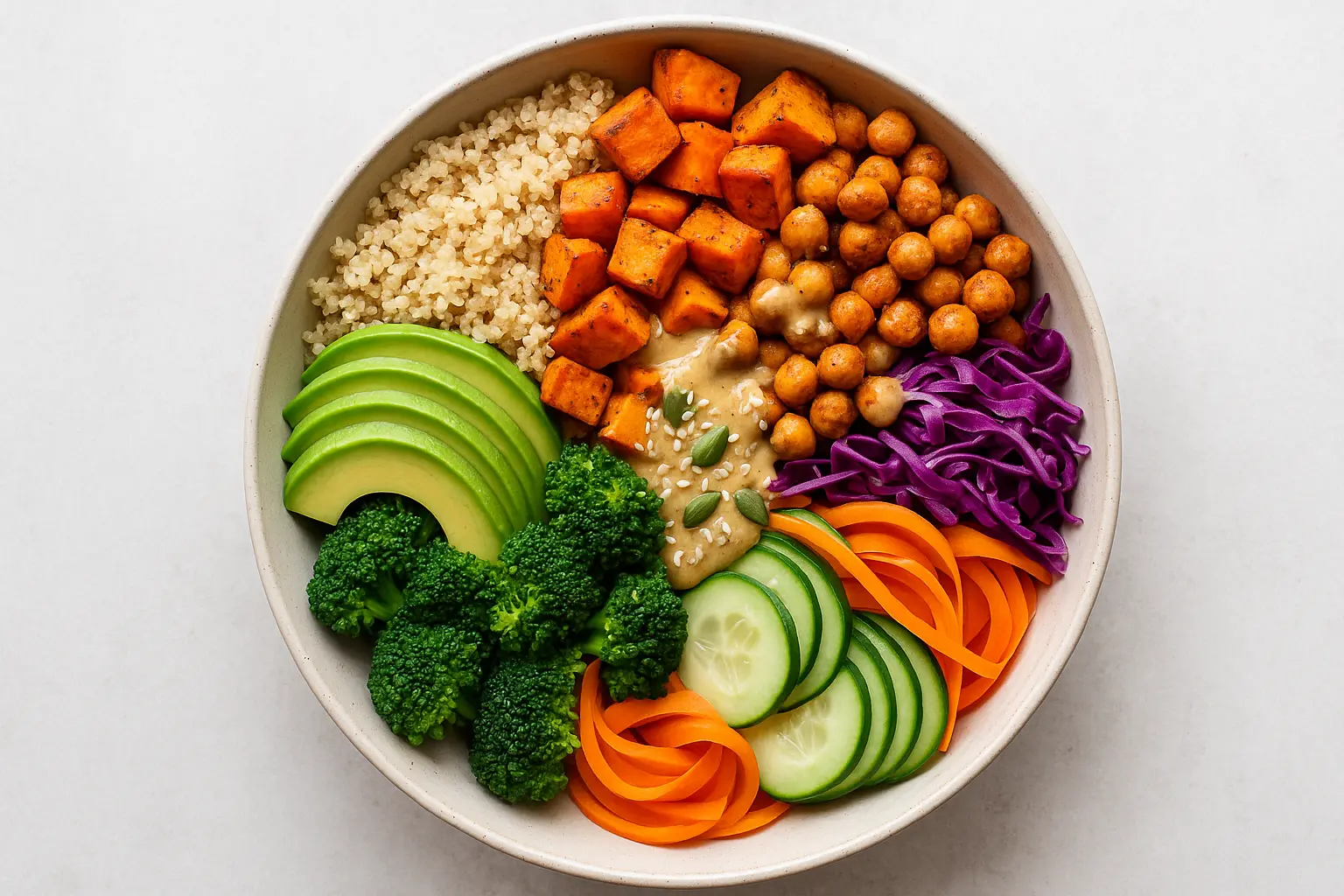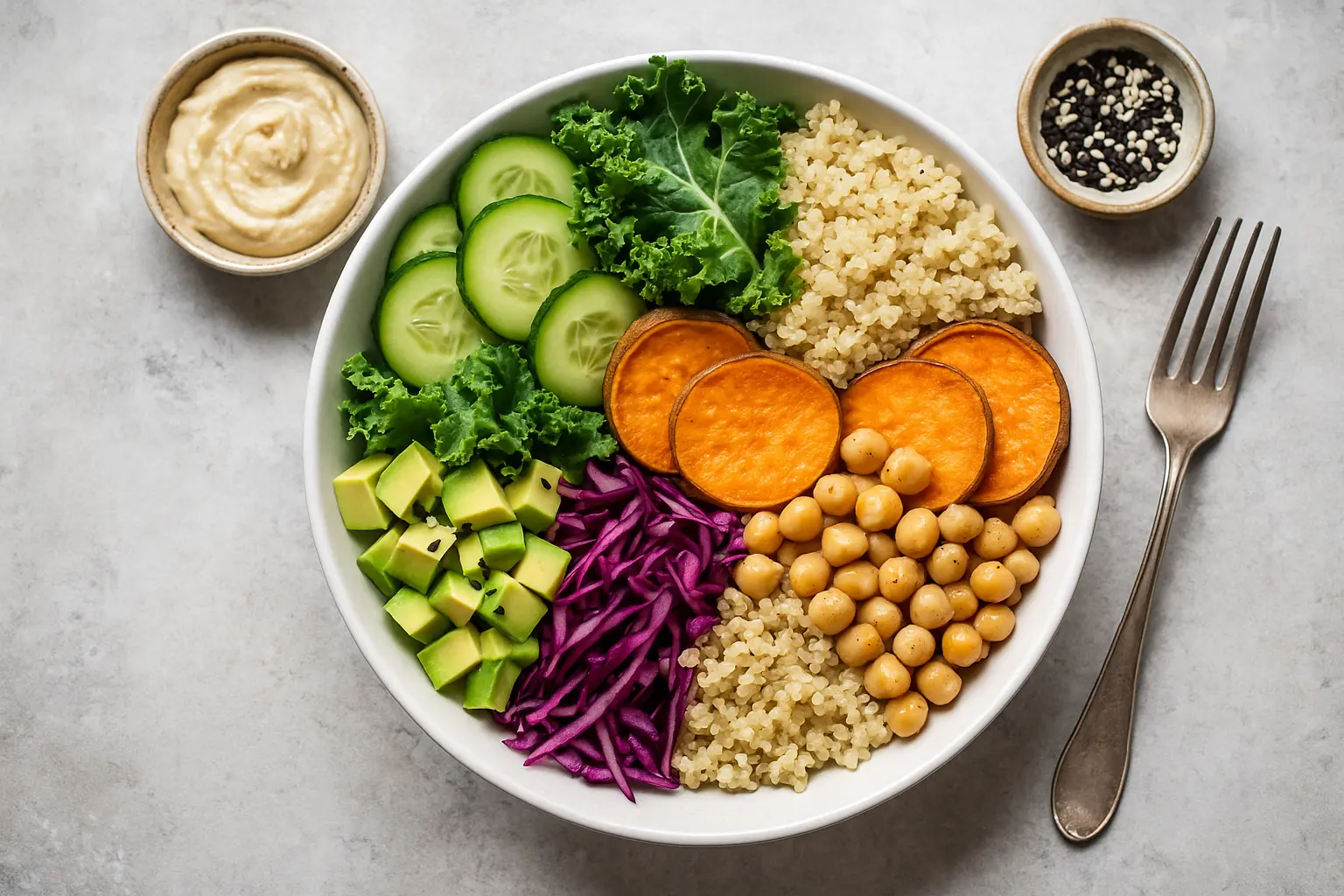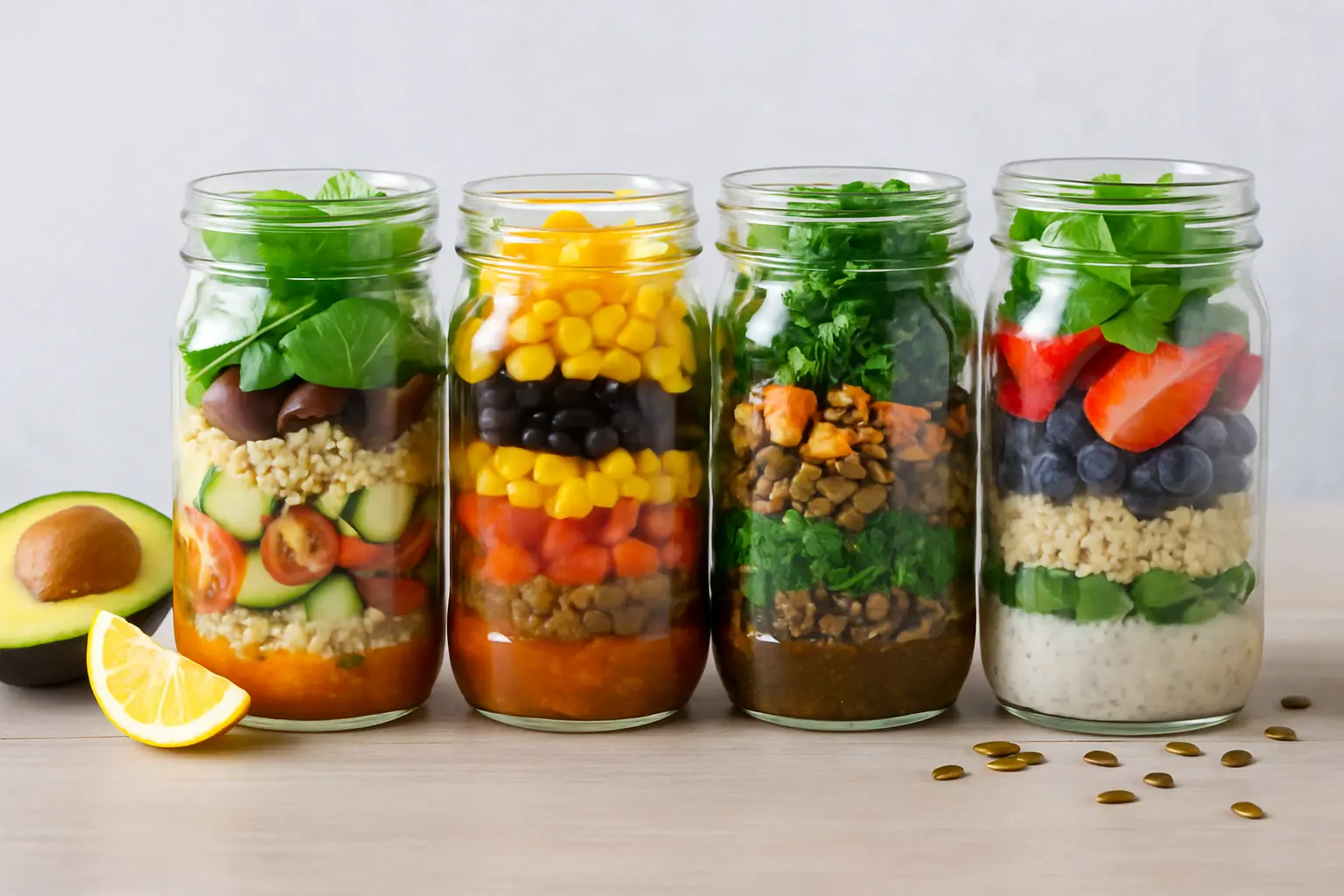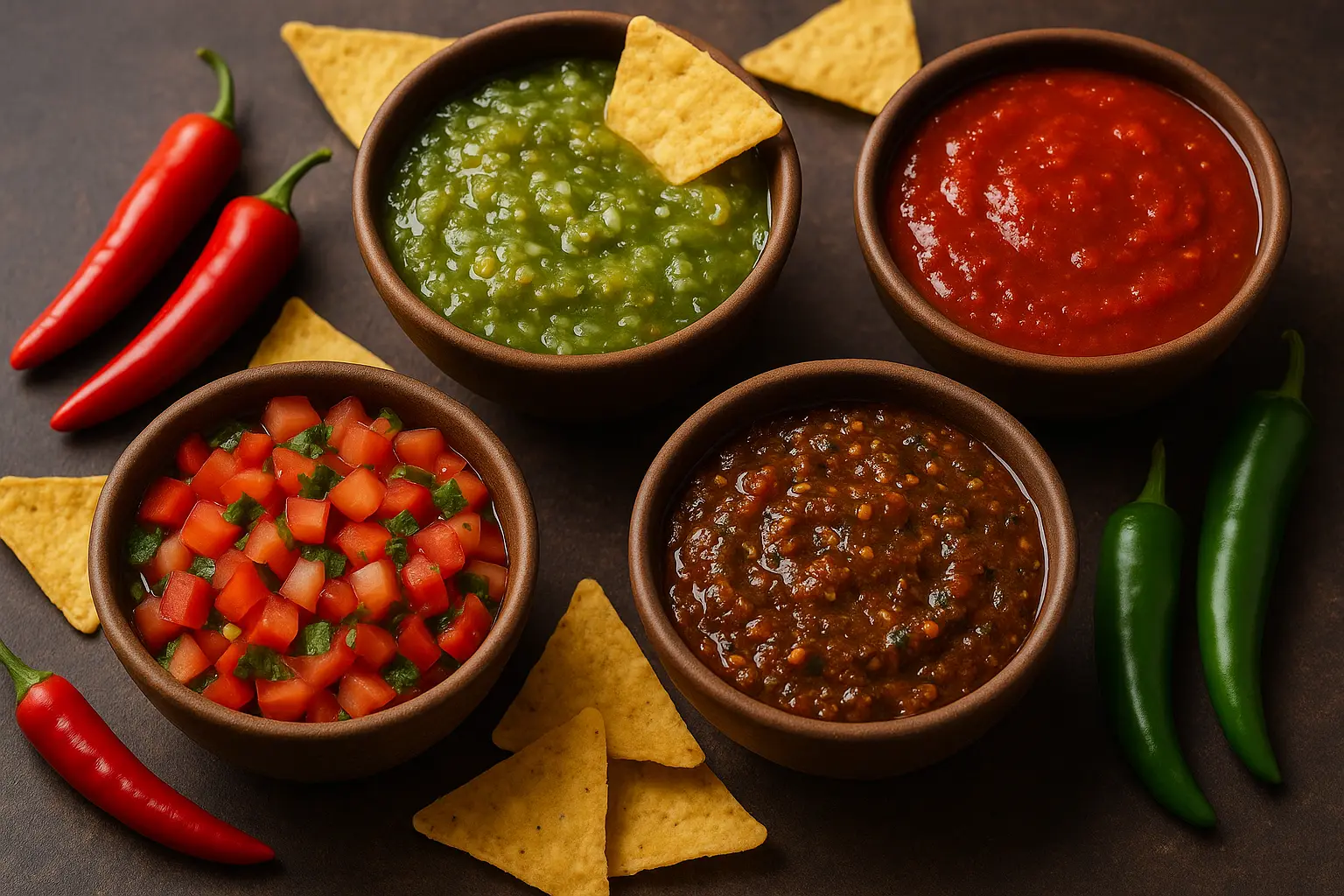If there’s one dish that captures the heart of modern home cooking, it’s the Buddha bowl. Bursting with colors, textures, and flavors, Buddha bowls are more than just food—they’re a lifestyle choice. These vibrant bowls are essentially a meal in one: a balance of grains, proteins, vegetables, and flavorful dressings assembled to nourish both body and soul.
What makes them so appealing? Simplicity, flexibility, and health. On a busy weeknight, instead of worrying about what’s for dinner, a Buddha bowl lets you mix and match whatever’s in your fridge to create something delicious and filling. Plus, they’re inherently plant-based, often vegan, and can be tailored to suit every dietary need.
In this guide, we’ll dive deep into everything you need to know about Buddha bowls: their origins, nutrition, step-by-step building blocks, recipes, creative variations, and meal prep hacks. By the end, you’ll have endless inspiration for turning weeknight dinners into something nourishing, exciting, and deeply satisfying.

What Exactly is a Buddha Bowl?
The term “Buddha bowl” may sound mystical, but its origins are humble. There’s no single definition—some say it’s named after the round shape of Buddha’s belly, while others believe it reflects the mindful, balanced approach to eating.
At its core, a Buddha bowl is:
- A base of whole grains or leafy greens
- A source of protein (plant-based or otherwise)
- A mix of raw, roasted, or steamed vegetables
- A flavorful sauce or dressing
- Optional toppings like nuts, seeds, herbs, or fermented foods
Think of it as a framework rather than a recipe. You’re creating a balanced plate in a single bowl.
Why Buddha Bowls Are Perfect for Weeknights
When the clock strikes 7 pm and you’re tired from a long day, the last thing you want is a complicated dinner. Buddha bowls solve that problem beautifully:
- Quick Assembly – Most bowls can be built in under 30 minutes.
- Versatility – Use leftovers, pantry staples, or seasonal veggies.
- Nutrition in Every Bite – Packed with fiber, protein, healthy fats, and antioxidants.
- Customizable for Everyone – Great for families with different tastes.
- Meal Prep Friendly – Make components ahead of time and assemble on the spot.
The Core Components of a Buddha Bowl
To build a bowl that feels complete and satisfying, follow this framework:
1. The Base
This anchors your bowl and provides carbs for energy. Examples:
- Brown rice
- Quinoa
- Farro
- Barley
- Millet
- Sweet potatoes
- Leafy greens (spinach, kale, arugula)
2. The Protein
Plant-based proteins keep you full and energized:
- Chickpeas (roasted or spiced)
- Lentils
- Black beans
- Tofu (baked, stir-fried, or grilled)
- Tempeh
- Edamame
3. The Veggies
A mix of cooked and raw vegetables creates balance:
- Roasted broccoli, cauliflower, or carrots
- Fresh cucumbers, cherry tomatoes, radishes
- Steamed zucchini or green beans
- Pickled vegetables for tang
4. The Sauce/Dressing
The “glue” that ties it all together. Try:
- Tahini-lemon dressing
- Peanut or almond butter sauce
- Miso-ginger dressing
- Creamy avocado-lime dressing
5. The Toppings
Crunch, freshness, and a final pop of flavor:
- Nuts and seeds (almonds, sunflower seeds, sesame)
- Fresh herbs (cilantro, parsley, basil)
- Kimchi or sauerkraut
- Microgreens
10 Nourishing Buddha Bowl Recipes
1. Mediterranean Buddha Bowl
- Base: Quinoa
- Protein: Roasted chickpeas
- Veggies: Cucumber, cherry tomato, red onion, olives, roasted zucchini
- Sauce: Creamy tahini-lemon dressing
- Toppings: Fresh parsley, toasted pine nuts
2. Asian-Inspired Buddha Bowl
- Base: Brown rice
- Protein: Marinated tofu cubes
- Veggies: Steamed broccoli, edamame, shredded carrots, pickled radish
- Sauce: Miso-ginger dressing
- Toppings: Sesame seeds, green onion
3. Mexican Buddha Bowl
- Base: Brown rice or cauliflower rice
- Protein: Black beans
- Veggies: Corn, salsa, avocado slices, shredded lettuce
- Sauce: Cilantro-lime crema (dairy-free)
- Toppings: Jalapeño slices, tortilla strips
4. Sweet Potato & Black Bean Bowl
- Base: Roasted sweet potatoes
- Protein: Black beans
- Veggies: Red cabbage slaw, avocado, roasted peppers
- Sauce: Chipotle-tahini dressing
- Toppings: Pumpkin seeds
5. Rainbow Vegan Bowl
- Base: Brown rice
- Protein: Lentils
- Veggies: Bell peppers, purple cabbage, carrots, spinach
- Sauce: Peanut dressing
- Toppings: Fresh cilantro, sesame seeds
6. Tofu & Kale Power Bowl
- Base: Farro
- Protein: Crispy baked tofu
- Veggies: Kale, roasted mushrooms, roasted carrots
- Sauce: Garlic-tahini sauce
- Toppings: Sunflower seeds
7. Middle Eastern Bowl
- Base: Bulgur or couscous
- Protein: Falafel or chickpeas
- Veggies: Tabouli, pickled onions, cucumber, roasted eggplant
- Sauce: Hummus + lemon drizzle
- Toppings: Fresh mint, sesame seeds
8. Winter Warm Bowl
- Base: Roasted root vegetables (beet, carrot, parsnip)
- Protein: Lentils
- Veggies: Steamed kale, roasted Brussels sprouts
- Sauce: Maple-mustard dressing
- Toppings: Walnuts
9. Thai Peanut Bowl
- Base: Jasmine rice
- Protein: Tofu or tempeh
- Veggies: Red cabbage, cucumber, bean sprouts
- Sauce: Spicy peanut sauce
- Toppings: Crushed peanuts, Thai basil
10. Breakfast-for-Dinner Bowl
- Base: Quinoa or millet
- Protein: Scrambled tofu
- Veggies: Spinach, roasted tomatoes, avocado
- Sauce: Cashew cream
- Toppings: Nutritional yeast, microgreens
Meal Prep & Make-Ahead Tips
One of the biggest strengths of Buddha bowls is how well they adapt to meal prep. Here’s how to streamline your week:
- Cook grains in bulk – Store in airtight containers for up to 5 days.
- Batch roast vegetables – Sheet pans of carrots, cauliflower, or sweet potatoes reheat beautifully.
- Prep proteins ahead – Marinate tofu or cook beans/lentils in advance.
- Make dressings on Sunday – Store in jars for quick drizzle during the week.
- Keep fresh elements separate – Add cucumbers, avocado, or herbs just before serving.
Nutrition Benefits of Buddha Bowls
- High in fiber → supports digestion and keeps you full.
- Rich in plant-based protein → balances energy levels.
- Loaded with antioxidants → vegetables fight inflammation.
- Customizable macros → build bowls to match weight loss, muscle gain, or maintenance goals.
- Great for kids and families → everyone can build their own bowl at the table.
Beyond Dinner: Other Uses for Buddha Bowls
Though we’re focusing on weeknight dinners, Buddha bowls are versatile:
- Lunch meal prep – Pack them in containers for grab-and-go meals.
- Breakfast bowls – Add grains, fruit, nut butters, and seeds.
- Party food bars – Set up a Buddha bowl station for guests.
- Diet-specific bowls – Keto-friendly (cauliflower rice + avocado), high-protein (quinoa + tempeh), or gluten-free.
Conclusion: A Mindful Way to Eat
Buddha bowls aren’t just about food—they’re about approach. Each bowl invites you to be mindful, to enjoy variety, and to embrace balance. They make weeknight dinners nourishing without being complicated, colorful without being fussy, and endlessly creative without being overwhelming.
If you’re looking to simplify your evenings, improve your nutrition, and bring more joy to your dinner table, make Buddha bowls your weeknight go-to. With a little prep, you’ll never face the “what’s for dinner?” dilemma again.
Leave a comment
Your email address will not be published. Required fields are marked *




















